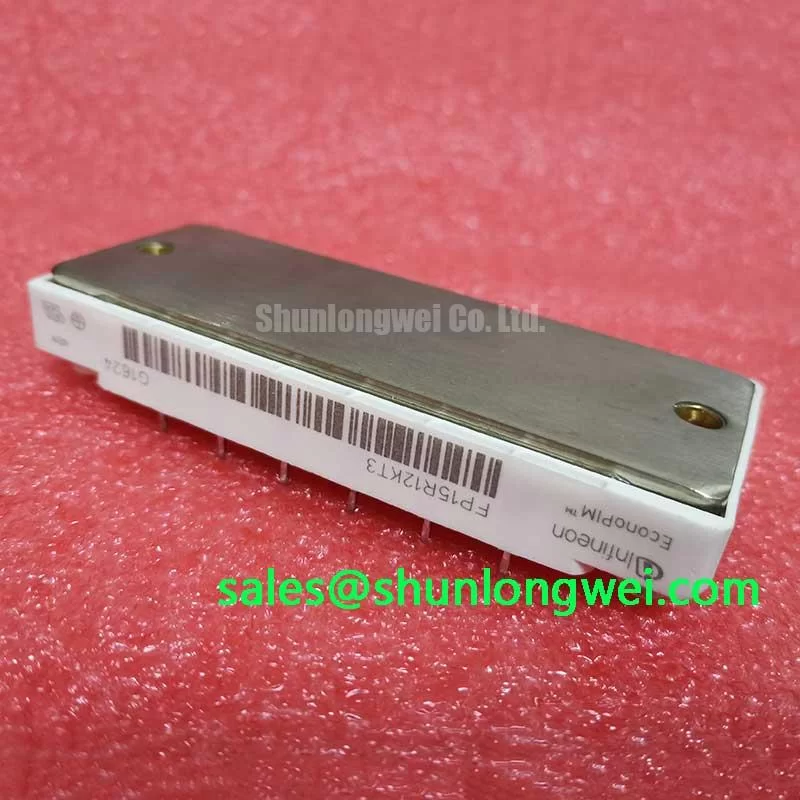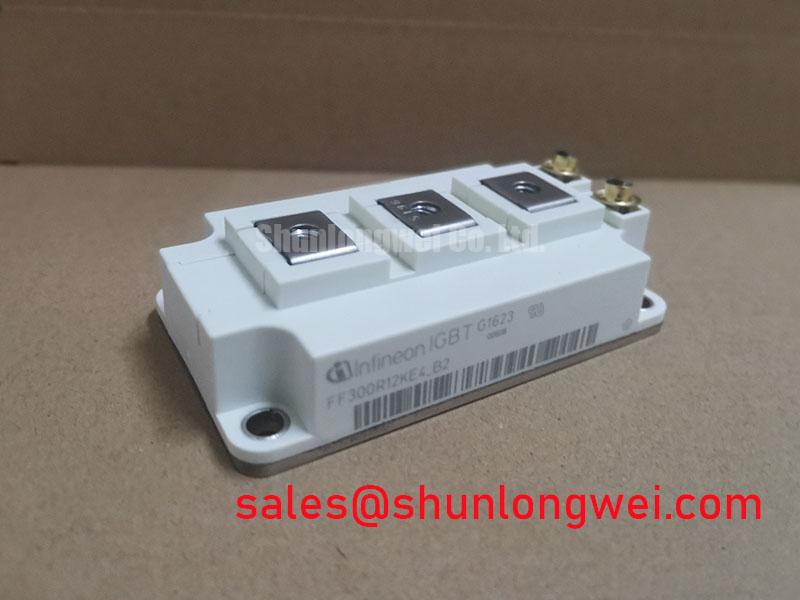Content last revised on November 21, 2025
FP15R12KT3: Technical Review of an Integrated 1200V, 15A Power Module
M2. Introduction & Core Strengths
The Infineon FP15R12KT3 is a highly integrated power module engineered to maximize efficiency and power density in compact, low-power motor drives. This EconoPIM™ 2 module combines a full three-phase inverter with a brake chopper, input rectifier, and an NTC thermistor into a single package. Its core specifications include: 1200V | 15A | VCE(sat) (typ) 1.95V. Key engineering benefits are significantly reduced system complexity and improved thermal performance. For engineers asking how to accelerate the design of a compact variable frequency drive, this module provides a validated, all-in-one power stage, eliminating the need to source and qualify multiple discrete components. With its balanced performance, the FP15R12KT3 is the optimal choice for cost-sensitive drive applications up to ~4 kW that demand high reliability and a small footprint.
B2. Application Scenarios & Value
System-Level Benefits in Compact Industrial Automation
The FP15R12KT3 is specifically tailored for low-power general-purpose and servo drives, which are foundational to modern industrial automation. A primary engineering challenge in this space is designing compact, reliable Variable Frequency Drives (VFDs) that can be integrated directly into machinery or control cabinets with limited space and cooling capacity. The high level of integration in the FP15R12KT3 directly addresses this challenge. By incorporating the rectifier, brake, and inverter stages, it dramatically reduces the PCB footprint and simplifies the assembly process compared to a discrete solution. This integration is crucial for applications like conveyor systems, automated guided vehicles (AGVs), and auxiliary pumps where space is at a premium.
Consider the design of a motor controller for a packaging machine. The system requires precise speed control but operates in a sealed enclosure with minimal airflow. Here, the module's use of TRENCHSTOP™ IGBT3 technology becomes critical. This technology provides a well-balanced trade-off between conduction losses (VCE(sat)) and switching losses. The typical VCE(sat) of 1.95V means less heat is generated during operation, easing the thermal management requirements. This allows for a smaller heatsink, contributing to the overall system's power density and long-term reliability. For systems requiring a higher current rating within the same compact footprint, the related FP25R12KT3 offers a 25A capability.
B3. Key Parameter Overview
Decoding the Specs for Integrated Drive Design
The parameters of the FP15R12KT3 are optimized for efficiency and control in motor drive applications. The table below groups key specifications by their functional block within the module, providing a clear overview for system design and analysis.
| Parameter | Symbol | Value | Condition |
|---|---|---|---|
| Inverter Stage - IGBT | |||
| Collector-Emitter Voltage | V_CES | 1200 V | T_vj = 25°C |
| Continuous Collector Current | I_C nom | 15 A | T_C = 100°C |
| Collector-Emitter Saturation Voltage | V_CE sat | 1.95 V (typ.) | I_C = 15 A, V_GE = 15 V, T_vj = 25°C |
| Total Switching Energy | E_ts | 1.80 mJ (typ.) | I_C = 15 A, V_CE = 600V, V_GE = ±15V, R_G = 33 Ω |
| Rectifier Stage - Diode | |||
| Repetitive Peak Reverse Voltage | V_RRM | 1600 V | |
| Forward Current | I_FAV | 25 A | T_C = 80°C |
| Thermal & Mechanical | |||
| Thermal Resistance, Junction-to-Case | R_thJC | 0.80 K/W (per IGBT) | |
| Max. Junction Temperature | T_vj max | 150°C | |
Download the FP15R12KT3 datasheet for detailed specifications and performance curves.
B5. Industry Insights & Strategic Advantage
Meeting Efficiency and Integration Demands in Modern Drives
The design philosophy of the FP15R12KT3 aligns with two major trends in power electronics: increasing energy efficiency mandates and the decentralization of drive systems. Global standards continuously push for lower energy consumption in industrial motors, making the efficiency of the core IGBT Module a primary design concern. The module's low total switching energy (E_ts) is a key enabler for meeting these targets. Think of switching energy as a small, fixed "energy tax" paid every time the IGBT turns on and off. In a PWM-controlled motor drive operating at several kilohertz, this tax is paid thousands of times per second. By minimizing this value, the FP15R12KT3 reduces the energy wasted as heat, directly contributing to a more efficient and cooler-running system.
Furthermore, the move towards Industry 4.0 is driving the adoption of decentralized automation, where smaller, intelligent drives are located closer to the motor rather than in a large central cabinet. This architecture demands power electronics with high power density and simplified integration. The FP15R12KT3's Power Integrated Module (PIM) topology is a strategic fit for this trend. Its all-in-one nature reduces design complexity and component count, allowing engineers to develop more compact and cost-effective *Variable Frequency Drive (VFD)* solutions without compromising on performance or the built-in thermal monitoring provided by the NTC.
B7. Frequently Asked Questions (FAQ)
What is the primary benefit of the PIM (Power Integrated Module) configuration in the FP15R12KT3?
The primary benefit is system simplification. By integrating the three-phase input rectifier, brake chopper, and inverter into one housing, the FP15R12KT3 reduces the number of components, minimizes PCB space, simplifies the thermal design to a single heatsink interface, and shortens the overall design and assembly time for a complete motor drive power stage.
How does the TrenchSTOP™ IGBT3 technology impact my design compared to older IGBT generations?
TrenchSTOP™ IGBT3 technology provides an optimized balance between low collector-emitter saturation voltage (VCE(sat)) for reduced conduction losses and lower switching losses. For a design engineer, this translates to higher overall inverter efficiency. This improved performance can be leveraged to either increase the power output for a given thermal budget or to reduce the size and cost of the required heatsink for a given power level, thereby enhancing power density.
A Call for Engineering Clarity
For engineering and procurement teams evaluating power solutions for next-generation compact drives, the FP15R12KT3 presents a compelling, technically sound option. We encourage a thorough review of the datasheet to align its performance characteristics with your specific application requirements. For technical inquiries regarding its implementation or to discuss your project needs, please reference the FP15R12KT3 part number in your communication.











